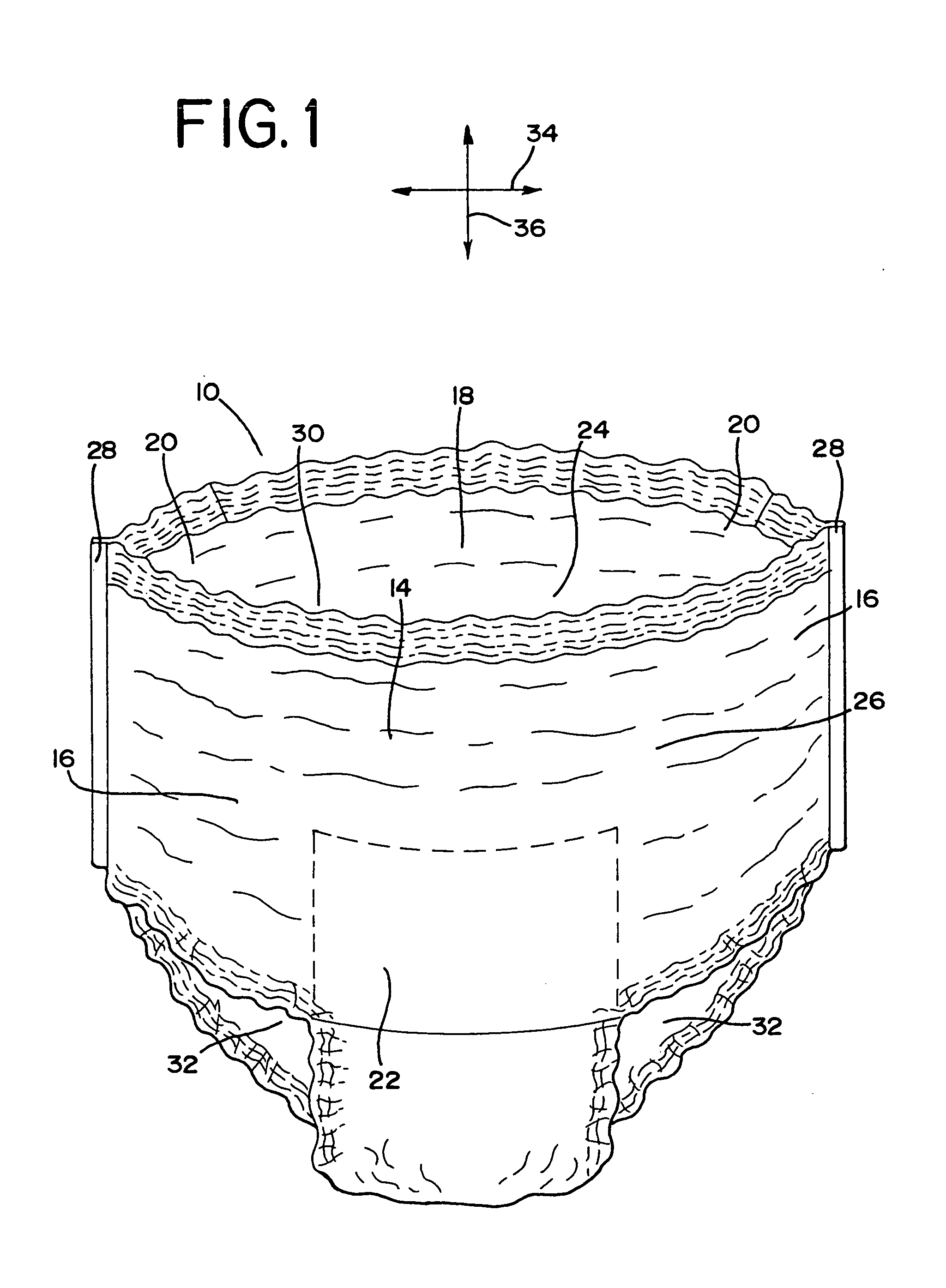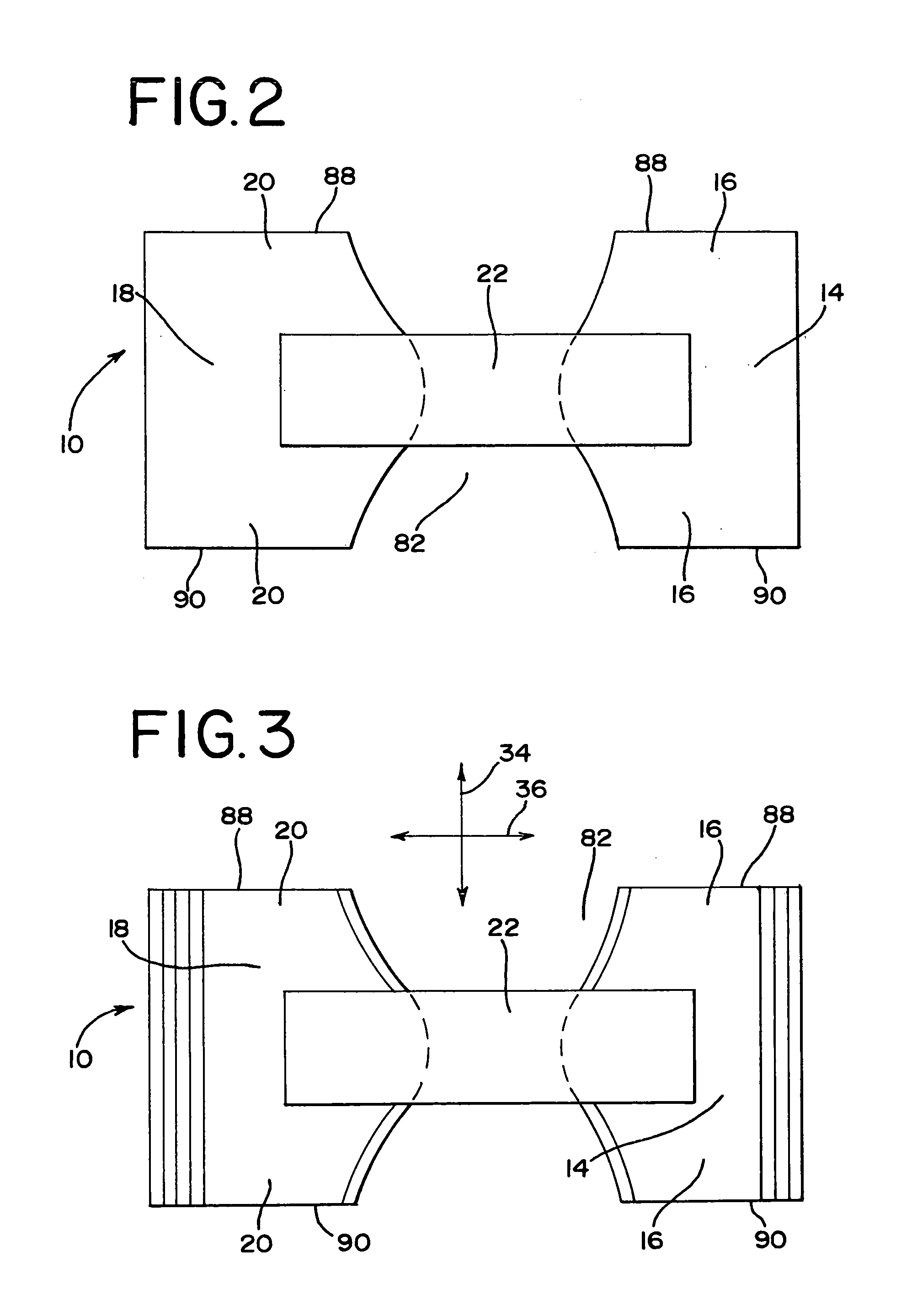Method for improved bond strength in an elastomeric material
a technology of elastomeric materials and bond strength, which is applied in the field of improving bond strength in elastomeric materials, can solve the problems of limited ability to form strong ultrasonic bonds using conventional processes, insufficient bond strength, and severely limit the conversion speed of potential products, so as to increase the ultrasonic bond strength, increase the speed, and increase the bond strength
- Summary
- Abstract
- Description
- Claims
- Application Information
AI Technical Summary
Benefits of technology
Problems solved by technology
Method used
Image
Examples
example 1
[0041]VF-SBL materials comprising KRATON® G2838 polymer filaments having a basis weight of about 10.5 gsm sandwiched between two facing layers, each comprising polypropylene spunbond webs having basis weight of about 17 gsm, and 2.0 gsm of Bostik-Findley H2096 adhesive, were ultrasonically bonded. The final or total basis weight of the samples was about 48 gsm in the restracted or gathered state.
[0042]The specimens, which comprised two layers of the VF-SBL materials, were elongated to elongations of 111% (14″ to 29.5″); 89% (16″ to 26.5″), and 65% (16″ to 26.5) and were bonded using a using a 1″ stationary rotary bonder having the following specifications:
[0043]
Frequency 40 kHzPower500 wattAir pressure 24 psiHorn length3.6″Horn Diameter3.5″Horn Width1.0″Horn peak to peak amplitude0.005–0.002″(waiting for confirmation)
[0044]The samples were produced at speeds of 45, 60 and 68 inches per second. The results in Table 1 (and shown graphically at FIGS. 6 and 7) display the average bond s...
example 2
[0047]CF-SBL materials comprising KRATON® G2760 polymer filaments having a basis weight of about 10.5 gsm, sandwiched between two facing layers, each comprising polypropylene spunbond webs having basis weight of about 17 gsm, were ultrasonically bonded. The final or total basis weight of the samples was about 37 gsm in the restracted or gathered state.
[0048]The specimens, which comprised two layers of the CF-SBL materials, were elongated to elongations of 111% (14″ to 29.5″); 89% (16″ to 26.5″), and 65% (16″ to 26.5) and were bonded using a using the 1″ stationary rotary bonder described in Example 1.
[0049]The samples were produced at speeds of 45, 60 and 68 inches per second. The results in Table 2 (and shown graphically at FIGS. 8 and 9) display the average bond strength in kilograms for the bonded CF-SBL materials. The bond strengths were measured in accordance with the test method set forth in Example 1.
[0050]
TABLE 2Average Ultrasonic Bond Strength (kg)0%65%89%111%SpeedElongatio...
PUM
| Property | Measurement | Unit |
|---|---|---|
| elongation | aaaaa | aaaaa |
| elongation | aaaaa | aaaaa |
| elongation | aaaaa | aaaaa |
Abstract
Description
Claims
Application Information
 Login to View More
Login to View More - R&D
- Intellectual Property
- Life Sciences
- Materials
- Tech Scout
- Unparalleled Data Quality
- Higher Quality Content
- 60% Fewer Hallucinations
Browse by: Latest US Patents, China's latest patents, Technical Efficacy Thesaurus, Application Domain, Technology Topic, Popular Technical Reports.
© 2025 PatSnap. All rights reserved.Legal|Privacy policy|Modern Slavery Act Transparency Statement|Sitemap|About US| Contact US: help@patsnap.com



